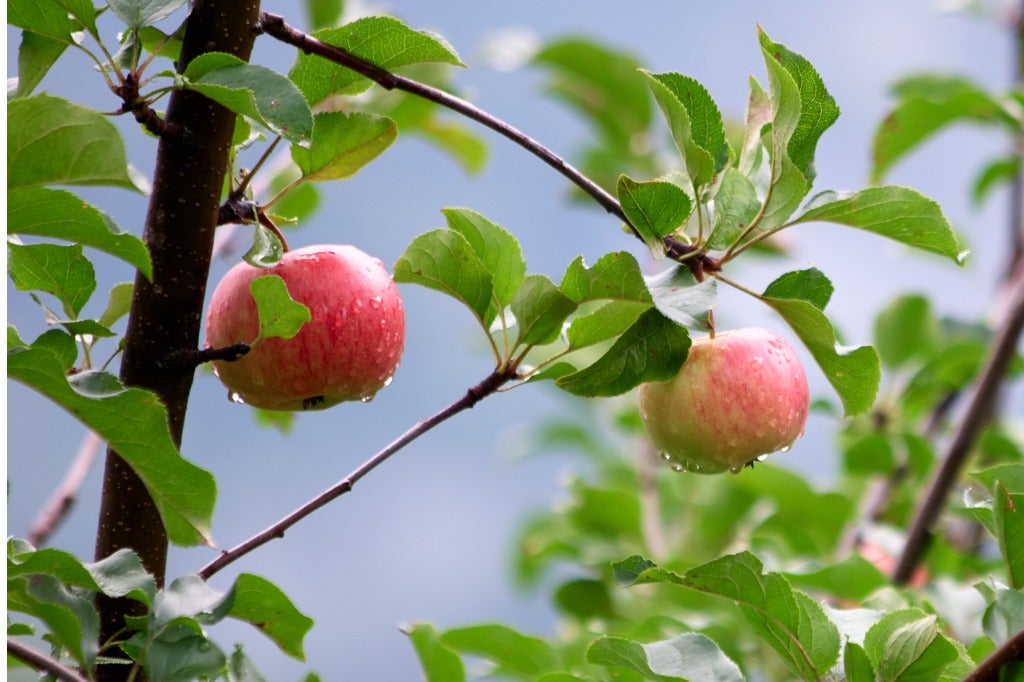Dayton Apple Trees: Tips For Growing Dayton Apples At Home


Dayton apples are relatively new apples with a sweet, slightly tart flavor that makes the fruit ideal for snacking, or for cooking or baking. The large, shiny apples are dark red and the juicy flesh is pale yellow. Growing Dayton apples isn’t difficult if you can provide well-drained soil and plenty of sunlight. Dayton apple trees are suitable for USDA plant hardiness zones 5 through 9. Let’s learn how to grow a Dayton apple tree.
Tips on Dayton Apple Care
Dayton apple trees grow in nearly any type of well-drained soil. Dig in a generous amount of compost or manure before planting, especially if your soil is sandy or clay-based.
At least eight hours of sunlight is a requirement for successful apple tree growth. The morning sun is especially important because it dries the dew on the leaves, thus reducing the risk of disease.
Dayton apple trees require at least one pollinator of another apple variety within 50 feet (15 m.). Crabapple trees are acceptable.
Dayton apple trees don’t require a lot of water but, ideally, they should receive an inch (2.5 cm) of moisture every week, either through rain or irrigation, between spring and fall. A thick layer of mulch will retain moisture and keep weeds in check, but be sure mulch doesn’t pile up against the trunk.
Apple trees require very little fertilizer when planted in healthy soil. If you decide fertilizer is needed, wait until the tree begins applying fruit, then apply a general-purpose fertilizer yearly in late winter or early spring.
Remove weeds and grass in a 3-foot (1 m.) area around the tree, especially in the first three to five years. Otherwise, weeds will deplete moisture and nutrients from the soil.
Gardening tips, videos, info and more delivered right to your inbox!
Sign up for the Gardening Know How newsletter today and receive a free copy of our e-book "How to Grow Delicious Tomatoes".
Thin the apple tree when the fruit is approximately the size of marbles, usually in midsummer. Otherwise, the weight of the fruit when ripe may be more than the tree can easily support. Allow 4 to 6 inches (10-15 cm.) between each apple.
Prune Dayton apple trees in late winter or early spring, after any danger of hard freeze has passed.

A Credentialed Garden Writer, Mary H. Dyer was with Gardening Know How in the very beginning, publishing articles as early as 2007.
-
 8 Perfect Flowers To Plant With Tomatoes To Boost Yields & Banish Pests
8 Perfect Flowers To Plant With Tomatoes To Boost Yields & Banish PestsDon’t forget flowers when choosing companion plants for your tomato beds or pots. These pretty, fragrant blooms add beauty but are also highly beneficial.
By Mary Ellen Ellis
-
 Want The Longest Lasting Hydrangea Flowers? Grow These 8 Panicle Hydrangea Varieties
Want The Longest Lasting Hydrangea Flowers? Grow These 8 Panicle Hydrangea VarietiesFor ornamental shrubs that deliver the longest flowering seasons with plush blooms and delicate hues, these panicle hydrangea varieties are essential in your yard
By Tonya Barnett